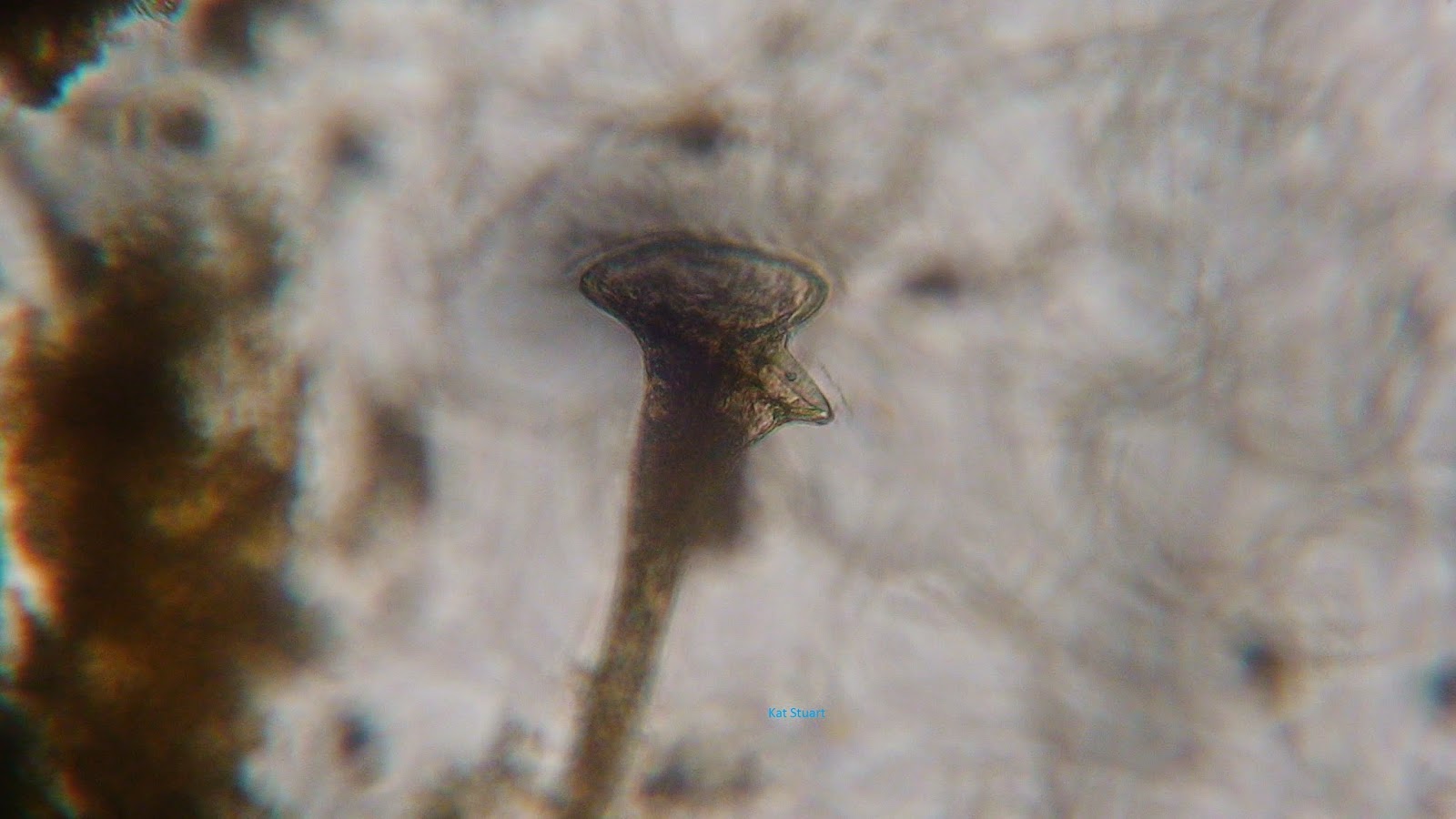This week my microaquarium was teeming with life. On Friday October 24, 2014 "ONE" Beta Food Pellet was inserted into each
microaquarium. On your blog posting for this week include date the food
pellet was added along with the following information: "Atison's Betta
Food" made by Ocean Nutrition, Aqua Pet Americas, 3528 West 500 South,
Salt Lake City, UT 84104. Ingredients: Fish meal, wheat flower, soy
meal, krill meal, minerals, vitamins and preservatives. Analysis: Crude
Protein 36%; Crude fat 4.5%; Crude Fiber 3.5%; Moisture 8% and Ash 15% (McFarland, 2014). Anywhere I looked through the microscope there were tiny organisms eating and moving around. The food pellet seemed to increase the amount of organisms tenfold.

I saw this microorganism moving along a stem about midway through the tank. Only one was observed.
This amazing Epistylis (Patterson 2013) was spinning the circular portion in the lower left corner to draw particles into it to capture food. This organism was tethered to a steam near the middle of the tank and was seen nearby a few other of its kin.
This organism also was tethered to a stem in the middle of the microaquarium and moved the bottom portion of its body to bring particles to it. It was seen alongside two other organisms of the same kind.
This unsegmented worm-like organism was seen near the bottom of the tank eating whatever smaller organisms came near it. The digestion process was very interesting to watch. The ingested organisms would be pushed to the back of the large chamber in the middle of picture and then would be pushed past a sphincter into another digesting chamber that was mostly obscured from view in the soil. Only one was seen.
This Philodina
(Pennak 1989) was found near the middle of the tank spinning around the water column while the large end of it pulled particles into it. A few were observed near each other with nothing else in close view. This suggests the Philodina are successful competitors in my microaquarium.





















